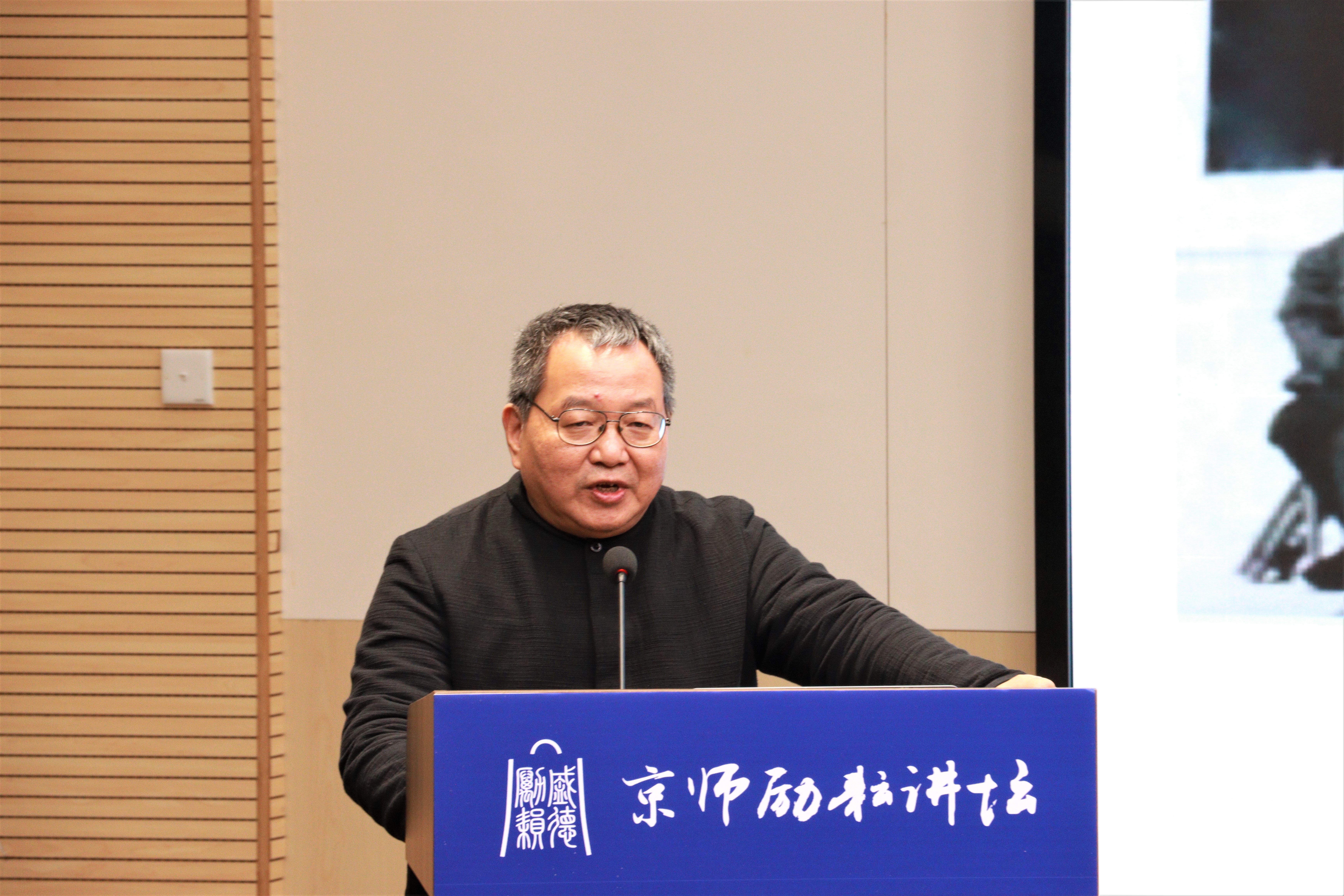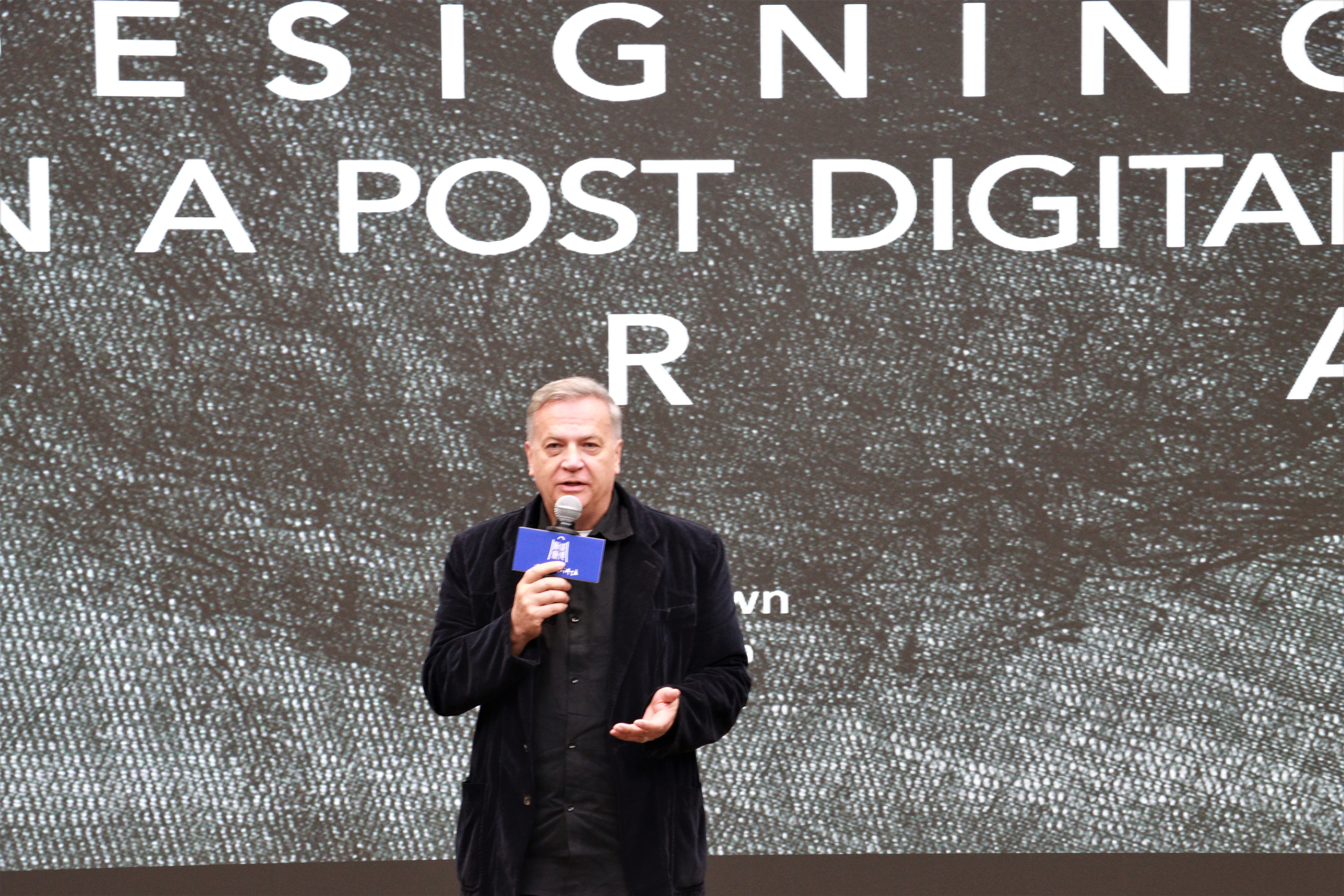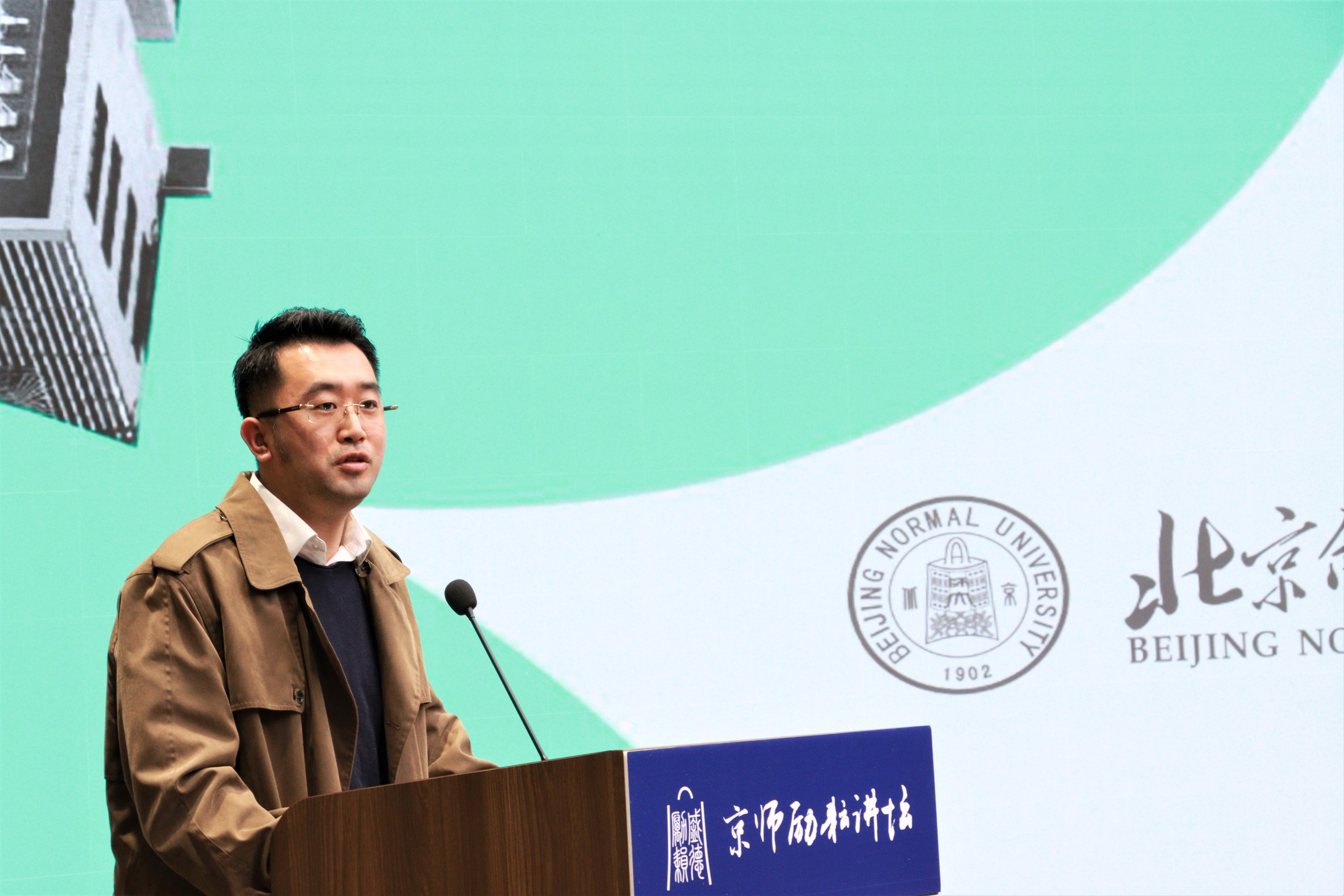On December 6, 2020, the 43rd of the Jingshi Liyun Forum series lecture themed on "Design for the Future" was held at Lijiao Building B101. This lecture was co-delivered by Xu Ping, BNU distinguished professor, Tony Brown, BNU distinguished professor, and Gao Peng, Director of the Future Design Center, attracting many audiences attended online and offline.

Xu Ping: Looking at Future Design from the Current Educational Environment
Xu Ping, Distinguished Professor of Beijing Normal University. Member of the FDC Academic Committee. Convener of the seventh discipline Evaluation Group (Design) of Academic Degrees Committee of The State Council. He worked as the Associate Dean at the School of Design, Central Academy of Fine Arts (CAFA), Dean of Graduate School, Director of the Institute for Design Culture and Policy, Vice President of China Higher Art Education Research Institute.
Today, China’s design education has developed to a certain scale but still lack a complete data analysis of the design education development from the perspective of education management. Without this, we cannot make a macro planning of design education. Therefore, since 2006, Xu Ping has led a team, started the research on China’s contemporary design education and gathered the basic data.
In 1982, the National Arts and Crafts Teaching Symposium of Higher Education Universities in Fine Arts (Xishan Symposium) marked the beginning of China’s modern design education. In this symposium, the content and objectives of modern design education were firstly clarified. There were only 18 universities and colleges in China providing design and art programs then, containing 1220 students majoring in design or related disciplines and 380 teachers with excellent educational backgrounds. Starting from the 1990s, design education began to develop rapidly and by 2005 the number of universities and colleges with design education in China increased to around 1000. From 2006, the number and scale of enrollment also increased gradually. By 2020, The total enrollment of design and related programs has reached 720 thousand.
Xu Ping pointed out several features of the 2020 basic data of China’s design education and stated that the lack of comprehensive research in design discipline might impact the quality, development
Can our design education develop healthily without design colleges and special design education disciplines? Xu Ping believes that the lack of a group dedicated to the future development direction, approach, and goals of the design discipline will make our design discipline lack of soul guidance, which will have a negative impact on the quality, development direction, and inherent quality of design education in China. The establishment of a design school that truly thinks about and executes the future development of innovative design and the design discipline as a starting point remains necessary. Teacher education is not something that can be replaced by general professional education, it has the connotation of ideology and professionalism that teacher education itself should have. This is the reason why Xu Ping has high enthusiasm and expectation for the establishment of the future design school in Zhuhai campus of Beihang University.
The objective of future design and design education is to find a rational explanation for the development of the natural material world and a corresponding theme for the future development of society. Xu Ping hopes that design will become a discipline that truly serves the people and design education will become an education that truly serves the people.
Tony Brown: Future design in the post-digital era
Tony Brown, BNU Distinguished Professor and Member of SFD Academic Committee, Tenured Full Professor of the École Nationale Supérieure des Beaux-arts de Paris, France, former Dean of the Sculpture Department and Director of the Doctoral Program “La Seine” and former Provost of the Parsons School for Design, Paris.
Since the first industrial revolution, brand new technologies such as steam engine, electric technology, information technology, and now artificial intelligence have driven us from the digital era to the post-digital era.
In the post-digital era, the designer's job is to make the digitalized and technological-advanced society more humane. Future design should focus more on shifting the thinking mode with a broader concept for design, instead of simple typography or product design.
Tony Brown demonstrated how to apply science and technology in artistic designs with his design work, and pointed out that design is a discipline combining arts and technology. To better design in the post-digital era, people should employ technologies and make them more humane through the integration with arts.
Tony Brown stated that creativity is the source of design and it’s also important to discover interest in the process of design. The future of design is in the future of China and the Future Research Center is a part of it.
Gao Peng: About the School of Future Design
Gao Peng, Researcher and Director of Future Design Center in Beijing Normal University, Member of Fine Arts Council of Chinese Museums Association, Council Member of Central Academy of Fine Arts and Honorary Director of Today Art Museum.
With new technologies, the world is moving towards a new way of living featuring diversity, electronics, new languages, new communicative modes, and experiential sense. Based in the Greater Bay Area, Beijing Normal University aims to set up the design discipline with the establishment of the School of Future Design.
Starting from three questions, “What kind of world are we facing”, “What kind of talents are needed” and “How to build a disciplinary framework for talent cultivation”, Gao Peng proposes that in the 21st century, the rapid development of science, technology and economy has led to a need for students with more professional and developmental abilities in education.
The School of Future Design at Beijing Normal University has invited seven professional leaders, namely Tan Ping, Wang Min, Xu Ping, Tony Brown, Li Qi, Miriam Mirolla and Tim Yip, to provide all-round guidance and planning for the discipline construction and development of the School of Future Design and its students. The School also advocates a problem-oriented learning approach and adopts a PBL teaching model, adopting “academic advisor + enterprise tutor” model to guide students to seek solutions to problems based on their areas of expertise. Currently, the School has established collaborative innovative partnership with Lenovo Group, Haier Group and Domus China.




